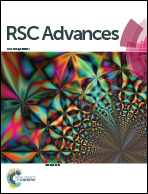(4-Methoxy)-phenoxy pentafluorocyclotriphosphazene as a novel flame retardant and overcharge protection additive for lithium-ion batteries†
Abstract
We evaluate (4-methoxy)-phenoxy pentafluorocyclotriphosphazene (4-MPPFPP) as a novel flame retardant and overcharge protection additive for lithium-ion batteries. The flammability of electrolytes containing 4-MPPFPP was studied by measuring the self-extinguishing time of the electrolytes. We found that 4-MPPFPP suppresses the flammability of the electrolyte. Moreover, 4-MPPFPP can be electrochemically polymerized on the surface of an electrode. This will protect batteries from voltage runaway. The influence of proper 4-MPPFPP addition on the cycling performance and capacity is negligible. The results may be helpful for the further design of advanced lithium ion battery electrolytes. We discuss the effect of the additive on the electrode/electrolyte interface and propose possible reaction paths.



 Please wait while we load your content...
Please wait while we load your content...